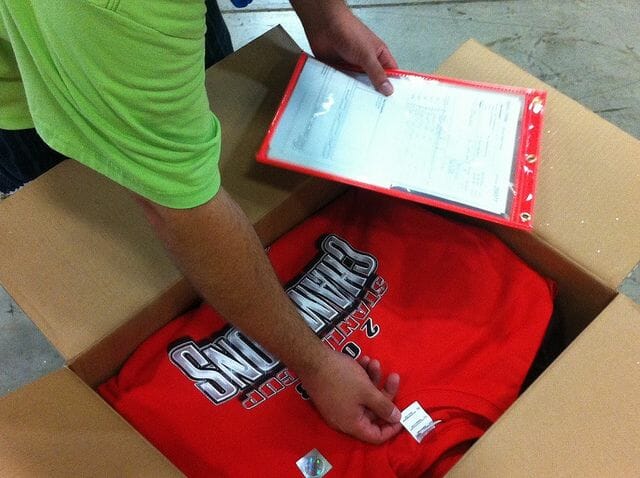In any shop in the decorated apparel industry, regardless of the markets they serve, there needs to be an extremely high degree of focus on customer service. “Customer service” isn’t just a couple of buzz words, but in fact, the lifeblood of your shop. But what is it really? Let’s break it down:
Fantastic customer service is all about being proactive, organized and working to please the customer at every opportunity.
Here’s a notion; develop your own “Customer Service Success Kit” for your shop. If this was a box of stuff, what would you pack into it? This isn’t just tangible things like a price list, art guidelines or embroidery tips, but also bigger ideas such as training, visits to your client’s office, friendliness and a lot of Thank You’s.
Spend a moment looking into your shop from the customer’s point of view. Do you have these already prepared?
New Customer Information. This ready to hand out or e-mail packet is loaded with the general information about your company. Your history, capabilities, hours, etc. Whatever you feel is important to a new customer to know and understand. This packet should include an order form, credit card authorization form, and maybe even a W-9 form if needed. Whatever you constantly hand out to customers. This and all of the items below should be branded with your company logo, and professional in appearance. Spend some time on this in the design phase and create a template page that you can use for other documents.
Price Lists. These should be already prepared and ready to go. If you have a computer, it’s easy to prepare an Excel spreadsheet or import price lists into your shop’s business software. Most shops have multiple pricing tiers that are based on the volume of work or nature of the customer. This means that there’s a different price quoted to some guy that just walks in off the street to someone that spends a suitcase full of money with you every month. Extra charges or fees are included on the price list for any imaginable circumstance, and are outlined for easy reference. That’s great, but the most important aspect of your price list is to train your staff on how to use it. Finding the right column on the sheet is just as important as “when” to charge that art fee, or when to waive it to get the job. You don’t want to leave money on the table, but you don’t want the business opportunity to walk down the street to another shop either.
Art Guidelines. Tired of getting a 14k .jpg file or logo saved in Word to use for a customer’s artwork? Design an art guideline information packet. Cram in all of the information pertinent to your shop. What software do you use? What does raster vs. vector mean? What is the standard size for a full front? Get all of this and more designed on a document and ready to hand someone or e-mail them.
Embroidery Guidelines. Just like the art guidelines above for screen or digital printing, but set up for your embroidery department. Every question you commonly get asked should have the answer on this information packed guideline. What is a run stitch? Can you digitize? What thread to you use? What’s the biggest hoop size you use? You hear these questions every day. Make your life easier by proactively giving out the answers to the test.
Other Information Guidelines. For special circumstances or marketing pieces, maybe you need to create a separate information sheet on your Sustainability Program or how you handle the CPSIA guidelines. Use your branding template and create the information sheet so it’s ready when it comes up in conversation with a client. There is absolutely no better way to impress someone than to be professionally prepared to help them when they are searching for answers.
Thank You Note or Card with your logo. What do you use to hand-write a thank you? Why not get a big stack of cards printed with your logo on them and some envelopes? When you complete the first order for a new customer, or you want to send a thank you to an old one, handwrite a sincere thank you and drop it in the box before it ships or your mailbox on the curb. These days everything is handled by e-mail, and the old fashioned thank you note has probably increased in power and significance as nobody uses these anymore. Yes, your mom was right!
Finally, here comes the hard part. Actually using these tools and training your staff to use them also. These pieces don’t do anybody any good sitting in a drawer or on a shelf in your supply closet. Make a point to use them, and train your staff to understand the importance of great customer service. Be proactive. Be organized. Be more impressive than everyone else. Kick some butt. You can do it!!
Here are some examples of the pieces we created and use at Visual Impressions. (Sorry, price lists are not available for this article)






12 comments